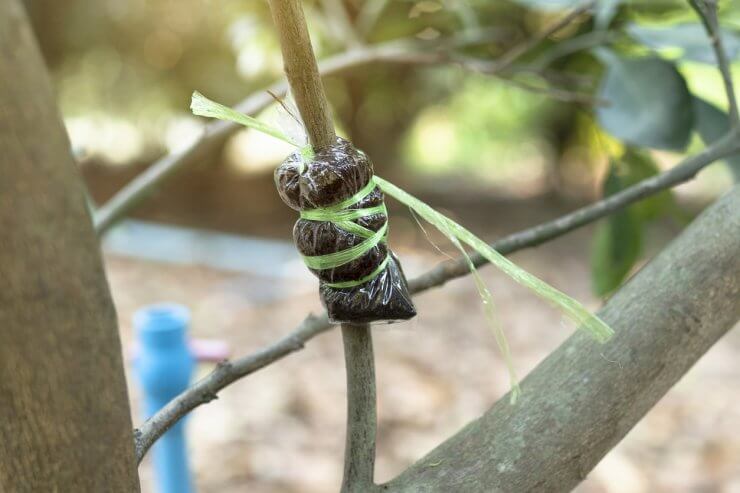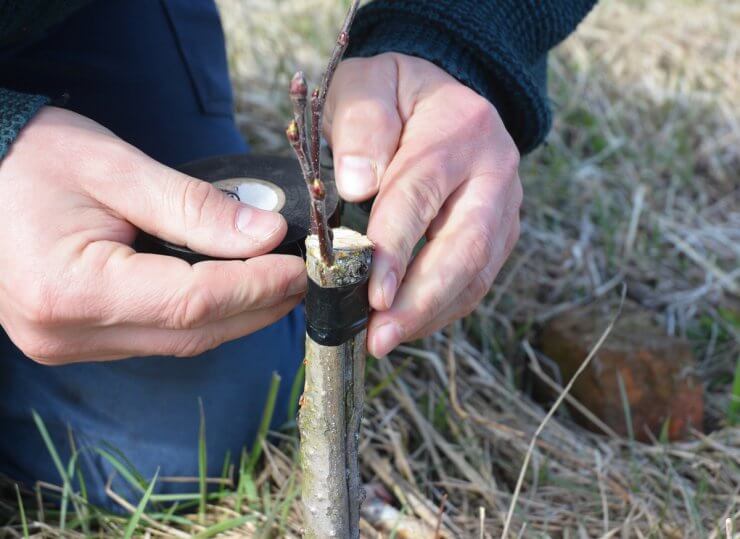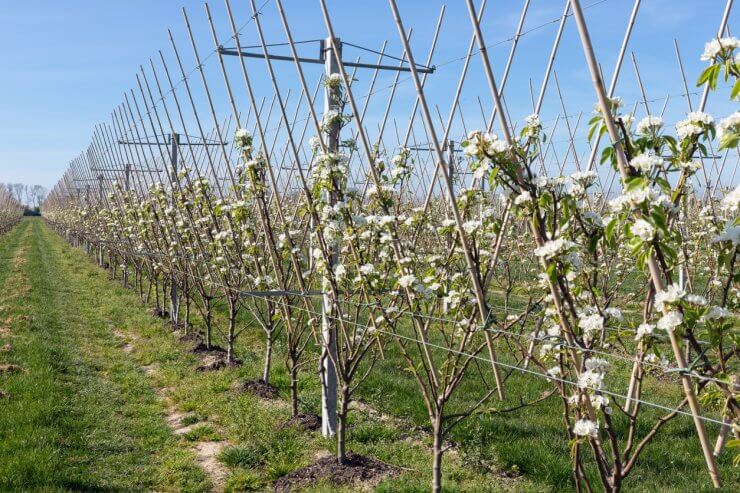Unleashing the magic of fruit tree cloning—a time-honored horticulture practice
In the realm of cloning, many of us might conjure images of Dolly the sheep or science fiction scenarios like the TV series “Battlestar Gallactica.” However, cloning doesn’t necessarily mean a journey into the realms of biotech complexity or sci-fi thrillers. In the field of horticulture, cloning, specifically fruit tree cloning, is a practice that’s as commonplace as it is advantageous, and it’s far from terrifying. In fact, it’s been a trusted technique of farmers and gardeners across the centuries, used as an effective shortcut to give a fruit tree a head start in life.
Growing a fruit tree from a seed or sapling might sound like the traditional route (albeit the long route!), but it’s not without its challenges. Seeds, once germinated, often yield saplings that fall short when compared to their parent tree. Pollination adds another layer of complexity to the equation, particularly if the right tree species and insects necessary for the process aren’t within close proximity.
And let’s not forget the most considerable factor—time. Consider an apple tree, which requires between seven to 10 years of nurturing from seed before it even hints at bearing fruit. Backyard orchards can be delightful, but who wouldn’t want to enjoy the fruits of their labor within their lifetime?
An alluring solution: The art and science of cloning fruit trees
This is where the cloning of fruit trees proves to be an ideal solution. It not only fast-tracks the growth of your orchard but also proves to be a cost-effective approach. More often than not, the process might not cost you a penny, especially if you already have some gardening basics on hand. So, where should you start? Below are seven insightful tips to master the art of cloning fruit trees. It’s time to grow your orchard while polishing your green thumb and scientific knowledge.
1. Spring is king: The optimal season for fruit tree cloning
While you can undertake the cloning process throughout the year, you’re likely to score higher success rates if you align your efforts with the spring season. This is when fruit trees sport new growth, characterized by softwood—an optimal feature for cloning endeavors.
On your hunt for suitable branches, keep an eye out for ones exhibiting a vibrant green hue and sporting fresh leaves. Summer and winter aren’t necessarily off-limits for fruit tree cloning, but they present their own set of challenges. These seasons demand extra diligence in maintaining ideal environmental conditions and exhibit a slower pace in root development. If you choose to embark on cloning fruit trees in winter, gear up for a potentially lengthy process, as it can take up to six months just for roots to establish themselves.

2. The cutting method: Classic cloning in horticulture
The traditional route of cloning fruit trees relies heavily on the cutting method. This process calls for a snippet of fresh growth, which then gets an invigorating dip in a root growth hormone before being nestled into a growing medium, eagerly awaiting its root development. This method can be hit-or-miss with fruit trees and really depends on the individual tree type and season.

3. The air-layering method: A nifty alternative for cloning fruit trees
Yet another approach to fruit tree cloning employs the technique of air-layering. This method is particularly beneficial when working with citrus trees and avocados, though it’s applicable to almost every variety of fruit tree (bananas, unfortunately, being the exception!).
The air-layering process requires a bit of botanical ‘surgery.’ It starts by making a small incision on a new growth stem of an existing fruit tree. Once the notch is made, you apply a root growth hormone, followed by wrapping the incision in a moist root medium like coconut coir or sphagnum moss. This package is then encased in plastic, creating a mini greenhouse that stimulates root growth.
Once the roots have sprouted, the branch is cut just below the new roots and the newborn clone gets its very own pot. With air-layering, the clone remains a part of the parent tree throughout the rooting process, lending it the nutrients and water it needs to grow strong and healthy. This fascinating technique adds a whole new layer of complexity and intrigue to the art of cloning fruit trees.

4. Grafting: The golden approach to fruit tree cloning
Among the different methods of cloning fruit trees, grafting often emerges as the gold standard, particularly for species such as apple trees and stone fruit trees (think cherries, plums, peaches, and nectarines). A little more complex in its approach, grafting might just be considered the ‘tree surgery’ of the horticultural world.
The process involves taking a scion, which is a young tree cutting, and attaching it to a rootstock or trunk from an older tree. While the rootstock should ideally be a similar tree, it doesn’t necessarily have to be the exact same variety. The rootstock and scion are then intricately cut and fused together using tape. The result? They coalesce and grow as a single entity, representing a harmonious blend of youth and maturity.
This successful merging of different tree elements in grafting is a testament to the wonders of nature’s adaptability. As a cloning method, it stands out for its capacity to preserve and propagate the specific desirable traits of fruit trees, ensuring that delicious varieties continue to flourish.

Tools of the trade: The critical importance of sterilization
Regardless of the propagation technique you opt for, one universally crucial rule stands out: the need for sterilized cutting tools. This step is non-negotiable, as it helps to curb the spread of diseases and fungi, which can otherwise hamper the healthy growth of your cloned trees.
Amongst the various sterilizing agents, isopropyl alcohol stands out as a quick, effective, and accessible option. This fast-evaporating substance can be applied directly to your tools and it’s ready for action almost immediately, keeping your momentum going. Using it in a concentrated form, ideally from a spray bottle, is a convenient and efficient approach.
A word of caution, though—it’s best to store isopropyl alcohol away from direct sunlight to prevent premature evaporation. With sterilized tools, you can ensure that the tree cloning journey commences on a healthy and hygienic note, setting the stage for fruitful outcomes.

Local wisdom: Harnessing expert advice for fruit tree cloning
If you’re looking for the most effective strategies and insider tips on cloning fruit trees, I can’t recommend enough the value of a visit to your local orchard or nursery. These places are often treasure troves of knowledge, brimming with experts who have years of hands-on experience in the field.
Engage with these green-thumbed gurus, tap into their expertise, and gather their tailored recommendations on the cloning process. They’re likely to provide valuable insights that stem from the practicalities of local conditions, making their advice particularly relevant.
If you happen to strike it lucky, you might even score a live demonstration, an opportunity that offers a far more enriching learning experience than any textbook or video tutorial could. With expert advice in your arsenal, you’ll be well-equipped to navigate the rewarding journey of cloning your own fruit trees.

Note it down: The significance of keeping a gardening journal
As an enthusiastic gardener or budding botanist, you might just find that the secret weapon in your toolbox isn’t a pair of shears or a bottle of fertilizer, but a humble notebook. This step might come off as a bit geeky, but believe me, it’s invaluable.
Whether you’re venturing into the domain of propagating trees or setting up a DIY irrigation system, maintaining a detailed record of your garden activities serves as a useful reference point. You might be surprised at how often you end up in the garden, checking the growth of a tree or vegetable plant, only to find yourself wracking your brain to remember when you planted it or which type of fertilizer you utilized.
Given the slightly more intricate nature of cloning fruit trees, keeping track of the different variables you’ve experimented with becomes even more crucial. By logging the dates of your activities, you can trace the progress of your experiments over time.
In the end, this trusty journal will become your go-to guide when you’re looking to replicate (no pun intended) your tree cloning experiments in the future. It serves as a personalized manual, capturing your unique experiences and discoveries, and it’s a testament to your journey as a gardener.
Cloning fruit trees may seem complicated, but with a little trial and error, you can expand your orchard and enjoy the fruits of your labor (pun very much intended). Check out my video on cloning/propegating a blueberry bush, and once you’ve tackled cloning fruit trees, check out my experience with planting a bare root apple tree!
What are your added tips for cloning fruit trees?


 Previous
Previous
